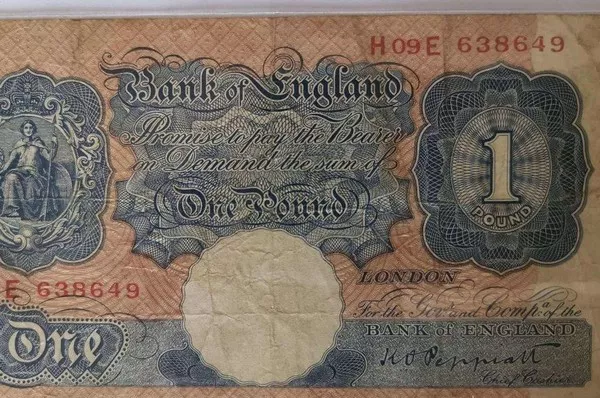The pound symbol, denoted as ‘#’, is a ubiquitous character in our daily lives. Whether you encounter it on your smartphone’s keyboard, in a spreadsheet, or as a prominent symbol in music notation, this unassuming character holds various meanings and applications across different contexts. In this article, we will delve into the appearance and significance of the pound symbol, exploring its history, variations, and modern-day relevance.
Historical Roots
The origin of the pound symbol dates back several centuries. It is believed to have evolved from the abbreviation for the Latin word “libra,” which means “scales” or “balance.” In ancient Roman times, “L” was used to represent libra, which was a unit of weight. Over time, this abbreviated form evolved into a simpler and more stylized character, the pound symbol, ‘#.’
In Medieval Europe, the pound symbol was commonly used as a unit of measurement for weight. It represented a pound of silver, and its form resembled a lowercase ‘L’ with a horizontal line through the middle. While the pound weight system has largely been replaced by the metric system in many parts of the world, the symbol itself has retained its significance and is used in various capacities today.
Appearance of the Pound Symbol
The pound symbol, also known as the hashtag, has a unique appearance. It is typically represented as a vertically-oriented tic-tac-toe grid with two horizontal lines (resembling the ‘equals’ symbol) running across it. The horizontal lines intersect the vertical lines near the top, middle, and bottom of the grid. The character is usually bold and sharp in appearance, making it easily distinguishable from other symbols and characters.
In its basic form, the pound symbol is a simple yet powerful design. It consists of two perpendicular lines that intersect and form a cross, with the horizontal lines resembling an ‘equals’ sign. This straightforward structure is a testament to the pound symbol’s versatility and adaptability across different uses.
Variations in Appearance
While the traditional pound symbol has the structure described above, it has evolved over time and taken on various appearances and styles in different contexts. The digital age has contributed significantly to the diversification of the pound symbol’s appearances.
Typeface Variations: The pound symbol’s appearance can vary based on the typeface or font being used. Some fonts render it with slightly elongated horizontal lines, while others keep it more compact and square. The thickness of the lines and the spacing between them can also differ, resulting in a range of stylistic variations.
Social Media and Pop Culture: In the realm of social media and pop culture, the pound symbol has gained new prominence as the ‘hashtag.’ It is commonly seen with no spaces between words or phrases and is often used as a metadata tag to categorize or index content. In these contexts, the hashtag is usually preceded by the pound symbol, creating a distinctive appearance.
Decorative Variations: In graphic design and decorative contexts, the pound symbol can undergo significant stylistic alterations. It may be adorned with various decorative elements, textures, or colors to fit the visual theme of a project. This flexibility makes it a versatile choice for designers and artists.
Music Notation: In music notation, the pound symbol is known as the “sharp” sign. It has a unique appearance compared to its standard pound symbol counterpart. The sharp sign consists of a simple vertical line with slanted bars that resemble forward slashes, denoting that a note should be played one semitone higher.
Modern-Day Significance
The pound symbol’s significance has evolved over the years, and it now plays a crucial role in several aspects of modern life.
Social Media and Hashtags: In the age of social media, the pound symbol has become synonymous with hashtags, which are used to categorize and discover content on platforms like Twitter, Instagram, and TikTok. Hashtags help users find and engage with discussions, trends, and topics of interest by clicking on or searching for a specific tag. The pound symbol has transcended its traditional usage and become a symbol of connectivity and social interaction.
Digital Communication: In digital communication, the pound symbol is frequently employed to organize and group messages. It is used in chat and messaging applications to create conversation threads and identify specific topics or subjects of discussion.
Coding and Programming: The pound symbol has a significant presence in coding and programming languages, often serving as a comment indicator. Programmers use it to provide explanatory notes within the code, making it easier to understand the purpose and functionality of various elements in a program.
Music Notation: In music, the pound symbol is a vital component of musical notation. As the sharp sign, it modifies the pitch of a note, raising it by one semitone. Musicians rely on this symbol to interpret and perform music accurately.
Data Analysis and Spreadsheets: In data analysis and spreadsheet software, the pound symbol is often used to indicate an anchor for a cell reference. It plays a crucial role in formulas and functions, enabling users to perform calculations and manipulate data efficiently.
Conclusion
The pound symbol, with its humble origins in ancient Latin and medieval Europe, has evolved into a versatile and ubiquitous character with a myriad of appearances and applications. Its significance in the digital age extends far beyond its weight-related origins, playing a pivotal role in social media, communication, coding, music, data analysis, and more.
As we navigate the complexities of our modern world, the pound symbol remains a constant, serving as a bridge between past and present, tradition and innovation, and simplicity and versatility. Its adaptability and prominence in various aspects of our lives highlight the enduring significance of this unassuming character, making it a symbol worth exploring and appreciating.


